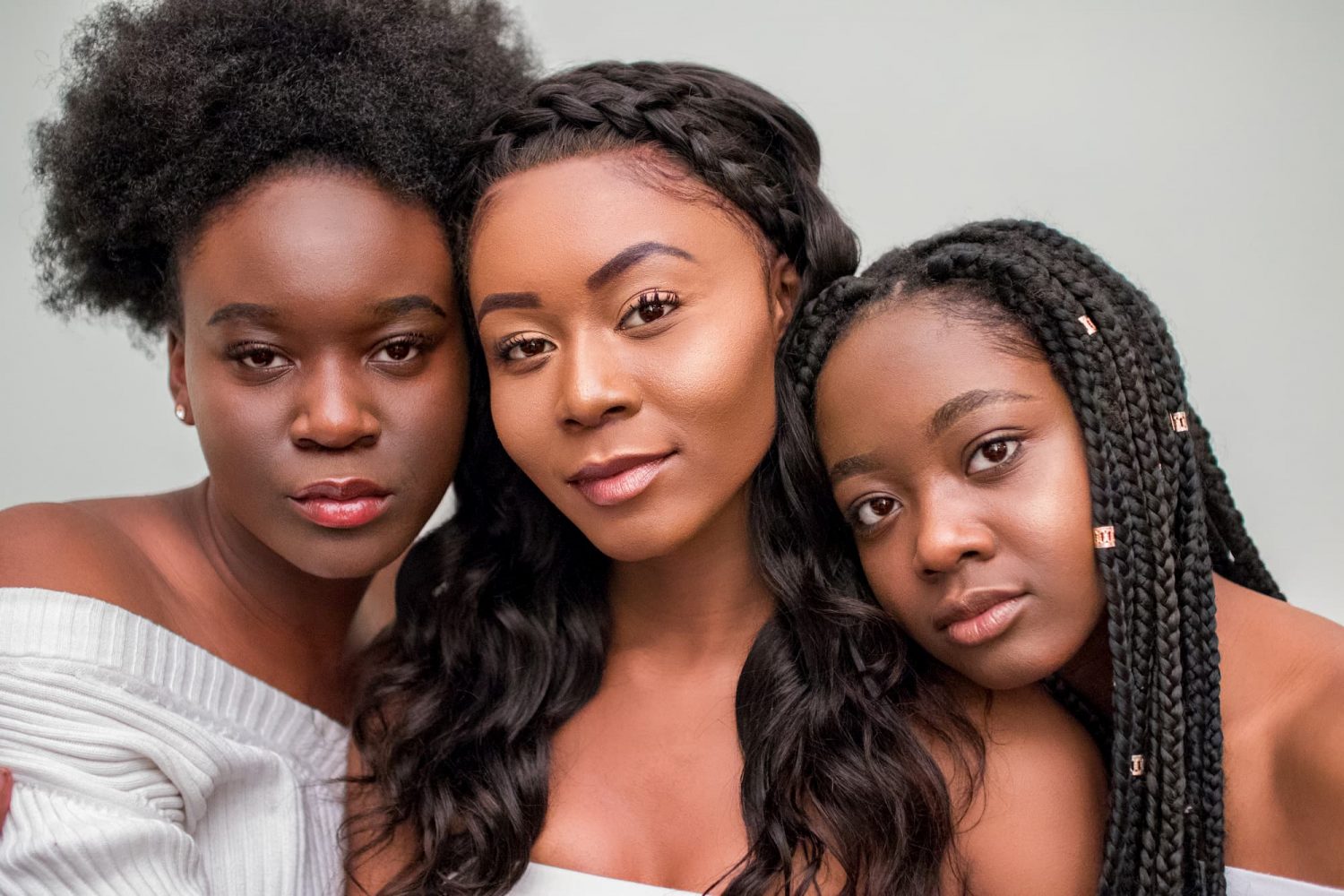Discover what colorism is, how it works, its origins and impact on the world; and what God has to say about dark-skinned and light-skinned people.
Colorism is one of the last systems of racism/white supremacy I’ll discuss in this series. Colorism is defined as prejudice or discrimination against individuals with a dark skin tone, typically among people of the same ethnic or racial group.
During slavery, there was the house negro and the field negro. The light-skinned negroes were usually allowed to work in the house with the master, eat slightly better food, and have less restriction than the dark-skinned field negroes.
Naturally this caused division among the slaves with some longing to have lighter skin, or envying light-skinned negroes. It also led to some of the light-skinned negroes believing they were better than their darker brothers and sisters.

After the slave trade, there was something called the “The Brown Paper Bag Test.” This was a test used to determine if a person could have certain privileges or not based on skin color. If a person’s skin matched, or was lighter than a brown paper bag, they got certain privileges, but those that didn’t meet the color standard were denied. Naturally this produced low-self esteem and all kinds of other issues we’ll talk about later.
To add to that, there was the saying that went like this:
If you’re white, you’re alright. If you’re yellow, you’re mellow. If you’re brown, stick around. If you’re black, get back.
What many black people didn’t understand was that this color favoritism was all part of a system to divide and control them. With black people hating each other because of skin color variations, they would be less likely to unify and plan an escape, or worse, bring retribution.
The other reason white slave owners allowed light-skinned negroes into their homes was because they could identify with someone of a skin tone similar to them.. White people back then, and many today, still have a hard time relating to someone that doesn’t look like them—that’s just the devastating results of the doctrine of white supremacy.
To this day, light-skinned “black” people (especially women) are more favored in white-controlled media and among the black community.
Examples of colorism in the media
On the talk show, The Real (a kind of younger version of The View), it features five women, four of which are very eurocentric in appearance (even though two of them are considered “black” women) and then there’s the other black woman, the most outstanding, the dark-skinned comedian and actress Loni Love.
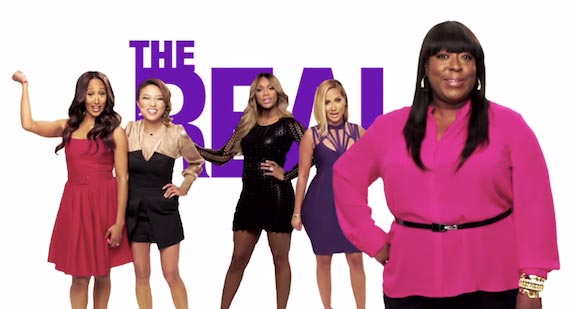
As my wife was browsing this show on Youtube, I couldn’t help but notice what was going on. We skimmed through several other episodes to verify what I was seeing. Basically, the dark-skinned Loni Love was there to amplify the beauty of the other four (eurocentric) light-skinned women, while making darker-skin black women look less attractive. Why would you have four attractive women who look fairly the same in terms of body type and skin color but then include a woman that largely contrasts that? I smell racist propaganda.
My point was verified by Loni being consistently dressed in clothes that were less than lady-like or less attractive than her co-hosts. Comparing her to the rest of the cast, one could say she’s not that attractive; yet I know this woman could be just as beautiful as her co-hosts if only she was allowed to wear clothing that highlight it.
When the camera pans to this show’s audience, a fairly large percentage of dark-skinned black women are in attendance. So what is the message that’s being communicated? That the average body, eurocentric features and light skin is what is beautiful and not the features of that other lady. This is what I believe is happening, and it’s just plain wrong.
Examples of colorism in movies
The movie Nina, is a biographical film of the late jazz musician and classical pianist Nina Simone about her rise to fame and relationship with her manager. The problem with this movie is the actress (Zoe Saldana) who plays Nina looks nothing like her, so much so that she had to perform the whole role in dark makeup and a fake nose.
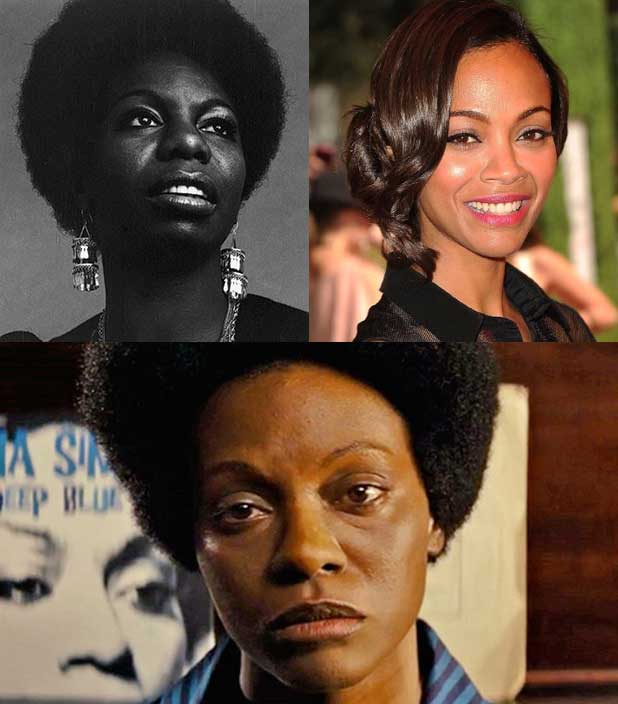
Hollywood just couldn’t pick an actress that would’ve fit the visual part of the role; not even Viola Davis was considered, especially when the musician was “all about the blackness.”
And then there’s the movie Concussion, the story of an African doctor who discovered that football was the reason ex-ball players were committing suicide. The doctor was played by light-skinned Will Smith, who looks nothing like the darker-skin African native Bennet Omalu.

Colorism is found in fictional black movies like the comedy classic Coming to America starring Eddie Murphy and Arsenio Hall in which an African prince (Murphy) disowns his royalty in search for a down-to-earth American wife to avoid the marriage his parents have arranged. In the movie, subtle hints at colorism are displayed as the dark-skinned women are less desireable, slutty or are rejected as was the prince’s first wife-to-be.

Colorism in magazines
It continues in magazines. Here we have Beyonce’s skin lightened to appeal to white women in a L’oreal advertisement (as if she wasn’t light enough already):
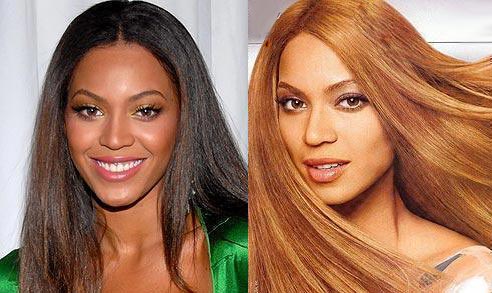
And OJ Simpson is darkened on the cover of Time magazine to appear more sinister. Since white people have been programmed to think dark skin is evil, this was done purposely to vilify OJ even more. Newsweek magazine later used the same photo, but undoctored, and Time magazine came under fire for it.
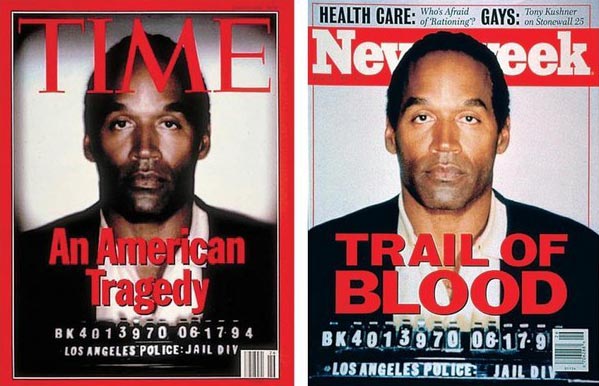
As seen in movies and sitcoms, darker-skinned women are portrayed as “ghetto,” aggressive and mean, while the lighter-skin women are more passive and ladylike. There’s a message being communicated: light-skin is better. In black sitcoms, when cast members quit or were fired, they were often replaced with a lighter version of the character. The message again is: light skin is more favorable.
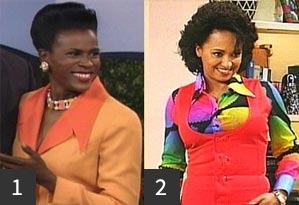

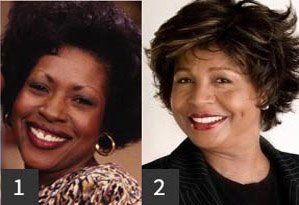
Colorism exceptions

And then there are the exceptions like actress Lupita Nyong’o who’s been plastered all over magazines for her beauty; as if dark-skinned beauty was a new thing. What is white-owned media really doing?
While black people are happy that she won an Academy Award and little black girls can gain some esteem as a result of it, white people seem to be preoccupied with her look while overlooking all her educational degrees and other talents. It really is the Fetishization of Lupita Nyong’o as one article puts it so well.
Then there’s the award she received that brought her fame—a downtrodden slave girl! Now you see what black people have to do to be recognized by white media.
Then they say things like, “How can a dark-skinned woman be so attractive, they’re usually aren’t?” Or, you’ll hear, “she’s pretty for a dark-skinned girl.” Overall, the agenda is to throw the black community a bone by uplifting this dark-skinned sister, while still portraying black people in a negative light through slave movies. Nothing has changed for black people. This girl isn’t changing the media perceptions of black people, she’s just being used to reinforce them. Before you know it, they’ll return to images of black women that look like this:
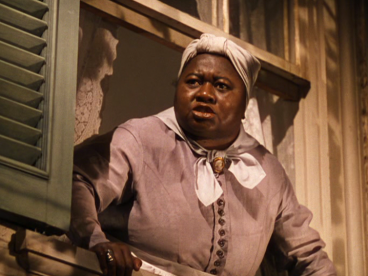
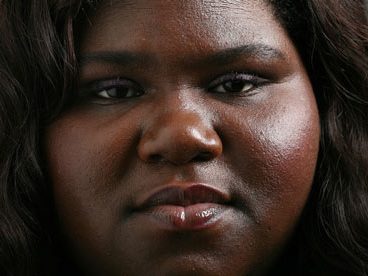
These images display black women as unattractive and they perpetuate the negative stereotypes about black women. White media rarely popularizes their most unattractive and obese white women, but they get a good laugh out of characterizing those within the black community.
The impact of colorism
The impact of colorism has had devastating effects on the entire world, not just among the so-called black people in America. The White Doll/Black Doll Test is a perfect example of how all nations have been taught to think about skin color. Please watch this short video of this test and you’ll realize the level of brainwashing that can occur in children at a young age.
Racism doesn’t come from within. It comes from an external source, and then people internalize it, own it, and begin to express it in destructive ways.
After watching the video, do you really believe most parents are teaching their children how to think about race, or are children, adults and society getting it from somewhere else? As I said before, the media is the root of racist propaganda. Racism doesn’t come from within. It comes from an external source, and then people internalize it, own it, and begin to express it in destructive ways.
Self-hatred, transformations and self-mutilation
Given this indoctrination about skin color, there’s no wonder why non-white people are looking to change their appearance. The main reason why some black women wear colored wigs and weave, or damage their hair, scalp and brain with perm relaxers is because of colorism. They’ve been taught to hate their own natural hair texture.
They also hate their skin leading to a bleaching epidemic especially in African countries. Many women are now using skin bleaching products that later cause skin discoloration, skin cancer and other medical problems.
25% of Mali, 77% of Nigerian, 27% of Senegal, 35% of South Africa and 59% of Togo women, are reported to use skin lightening products on a regular basis. In 2004, nearly 40% of women surveyed in China, Malaysia, the Philippines and the Republic of Korea reported using skin lighteners—hopefully these numbers have gone down.
According to the World Health Organization (WHO), mercury is a common ingredient found in skin lightening soaps and creams. Although skin bleaching products are hazardous to one’s health and banned in many countries, these products are still available for sale on the Internet, providing unlimited access.

The most dangerous effect of the inorganic mercury contained in skin lightening soaps and creams is kidney damage. Mercury in these products may also cause physical reactions such as scarring, reduction in the skin’s resistance to bacterial and fungal infections, and also psychological outcomes such as anxiety, depression or psychosis, and peripheral neuropathy. This skin whitening response to colorism is absolute madness.
Miscegenation
Long before skin bleaching existed, there was the alternate way of lightening one’s skin or one’s generation, and it was done through miscegenation. Miscegenation is the interbreeding of people considered to be of different racial types usually for the purpose of eradicating the other race.
While self-hating blacks may marry white or lighter-skinned blacks today for the purpose of lighter-skinned children, back then after slavery ended, it was the white-skinned people who were encouraging race mixing for the purpose of eliminating the darker-skinned races.
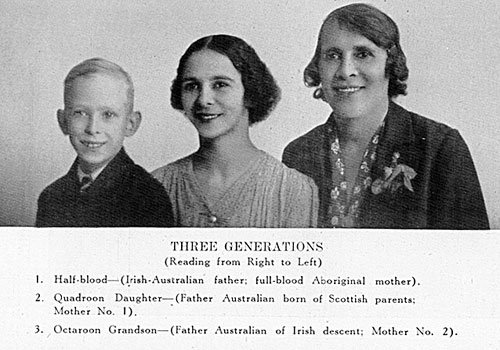
In this very informative article, 5 Nations That Imported Europeans to Whiten The Population, it details the different nations that did this. What this information helps us to understand is that not all nations are originally light-skinned, and as we continue on in this series, you’ll realize that no part of the human race was ever originally white-skinned to begin with.
The five nations mentioned in the article were Brazil, Cuba, Jamaica, South Africa, and Australia. There were other nations left out, as the comments suggested: the U.S. Native Americans, the Dominican Republic, Argentina, New Zealand, Puerto Rico and the South Pacific; and I’m sure there’s more. When I mention these nations I’m not saying that they all participated in this willingly, but that it was deliberately done.
The reasons for these governments doing this is, again, racism/white superiority and colorism. Here’s an excerpt from the article:
After the trans-Atlantic slave trade was officially abolished toward the end of the 19th century, many whites felt threatened and feared free Blacks would become a menacing element in society. The elites spent a great dealing of time mulling over how best to solve the so-called Negro problem. A popular solution that emerged during this period was the ideology of racial whitening or “whitening.”
Supporters of the “whitening” ideology believed that if a “superior” white population was encouraged to mix with an “inferior” Black population, Blacks would advance culturally, genetically or even disappear totally, within several generations. Some also believed that an influx of immigrants from Europe would be necessary to successfully carry out the process.
Although both ideologies were driven by racism and White supremacy, whitening was in contrast to some countries that opted for segregation rather than miscegenation, ultimately outlawing the mixing of the races. This, however, was just a different means to the same end as these nations also imported more Europeans while slaughtering and oppressing the Black population.
The more I’ve researched, the more I discovered that in every so-called white-skinned nation there are the dark-skinned indigenous. They still exist but in small percentages and of course, they’re treated with very little respect by their white-skinned descendants.
Here’s some pics of the indigenous of Australia:
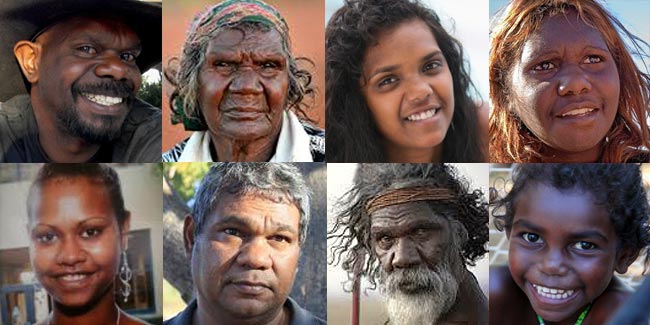
Here’s what non-original Australians look like:
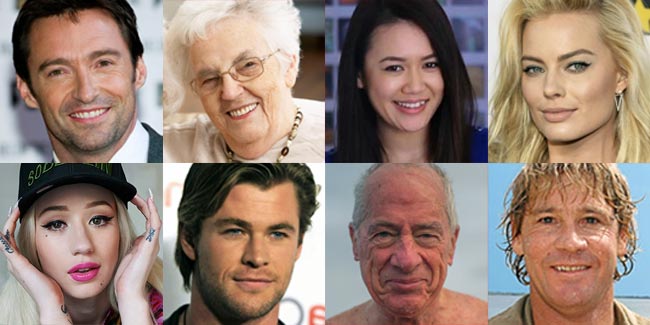
Amazing how generations of inbreeding has transformed a once brown nation into a white one! But is this right, even if the citizens and the government of those nations agreed with it? Is God happy with this? The next article will answer those questions and more.
While the world currently favors white skin over darker skin, God doesn’t. The apostle Peter got that revelation when we he said:
I see very clearly that God shows no favoritism. In every nation he accepts those who fear him and do what is right (Acts 10:34-35 NLT)
So we know that God isn’t looking down with favor on people with light skin as opposed to people with brown skin. He’s looking at the heart of mankind and he will accept anyone who fears him and does what is right.
Next, we’ll talk about the origin of white skin. Stay subscribed.
